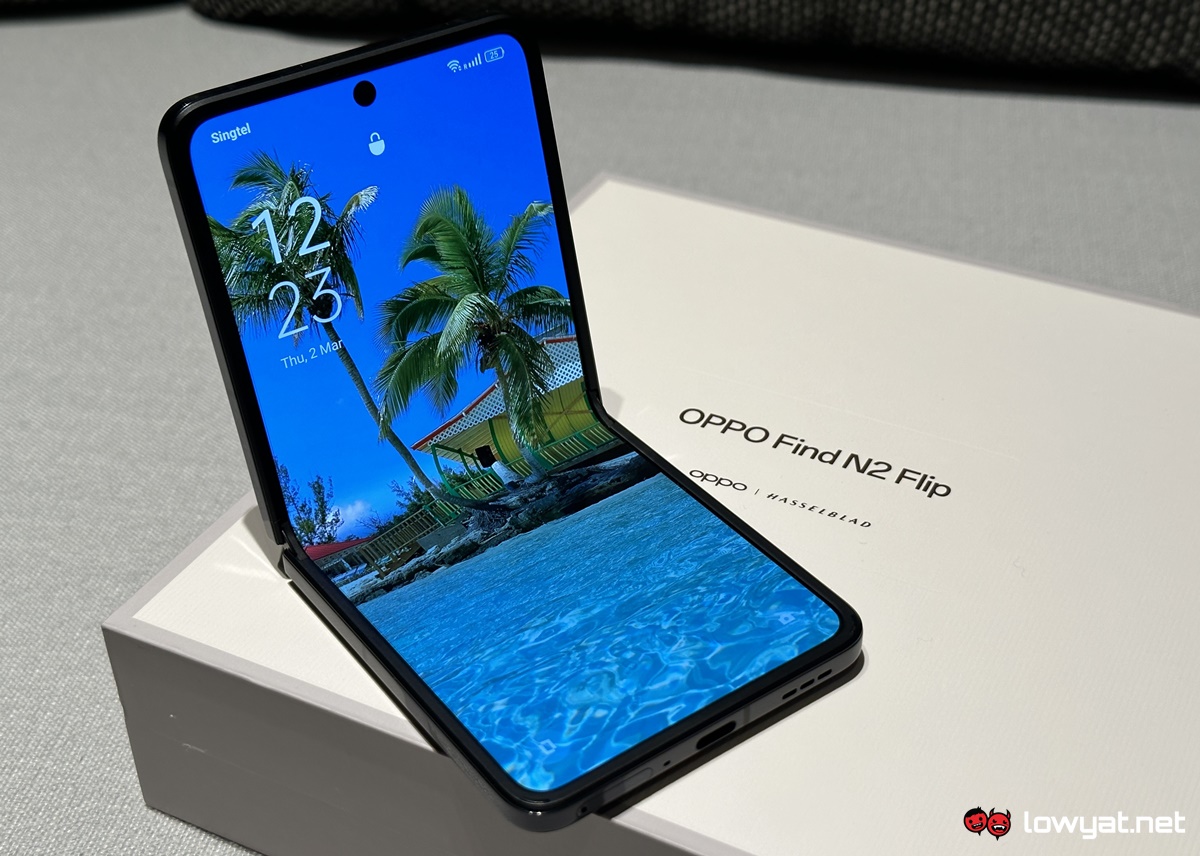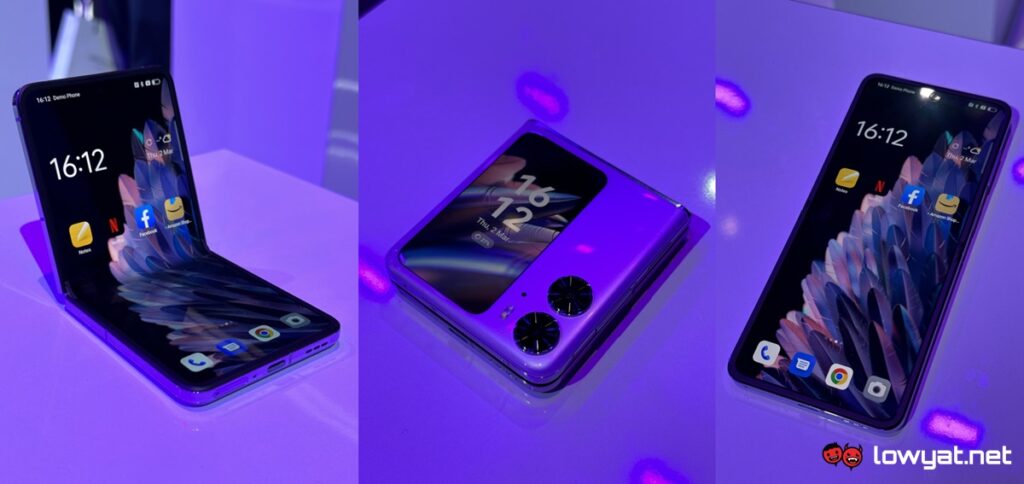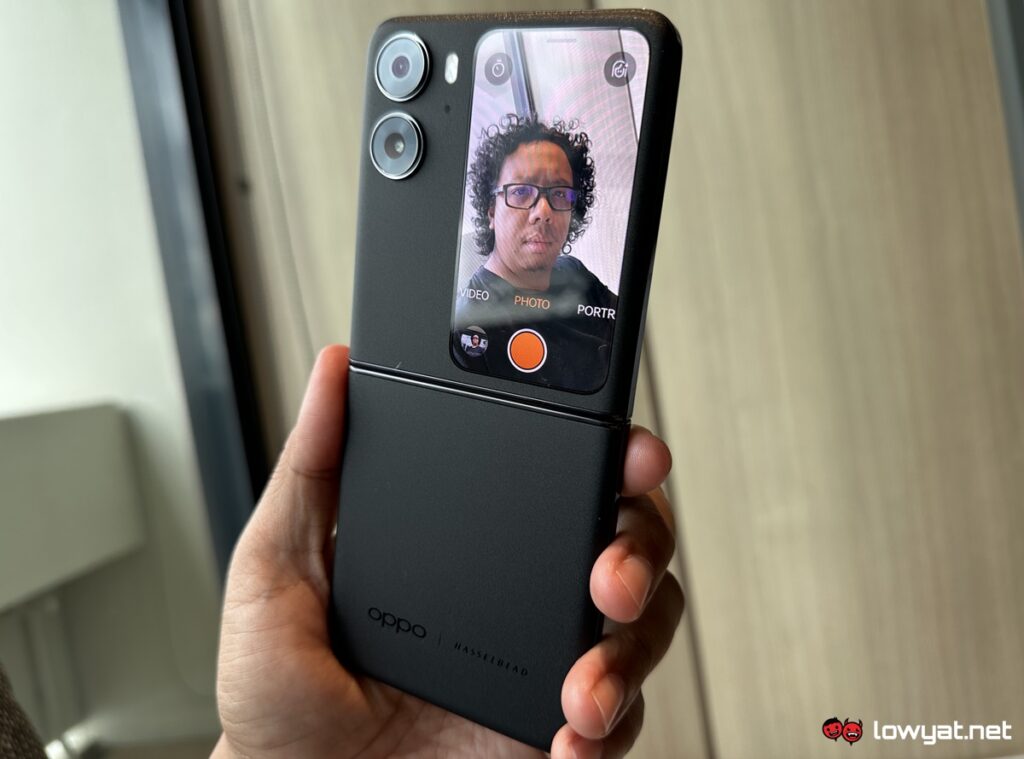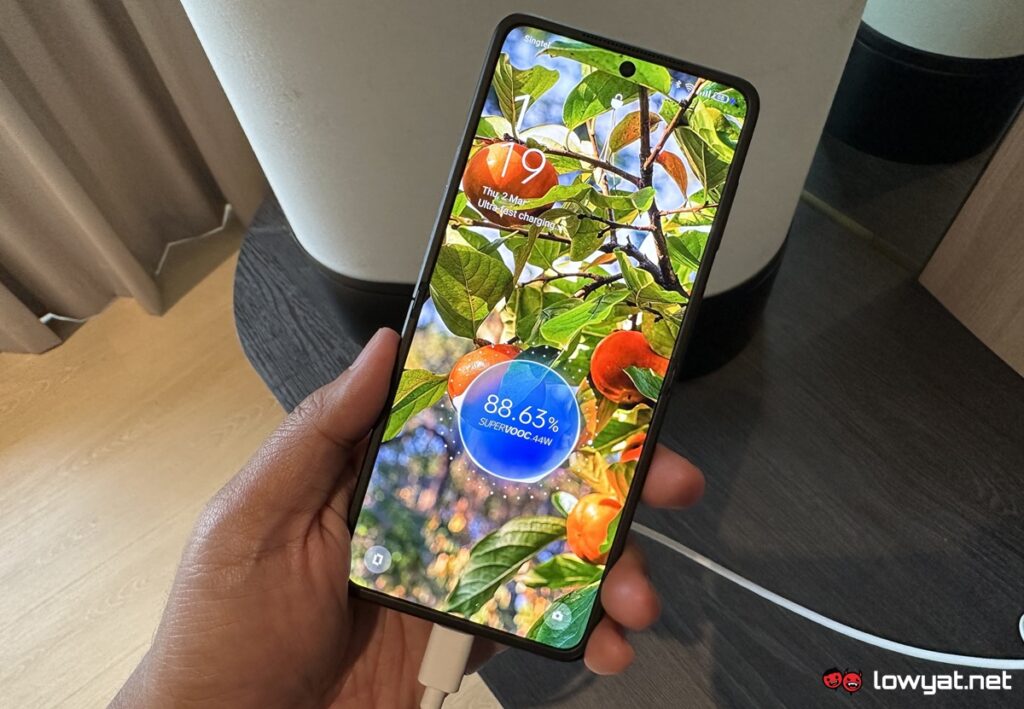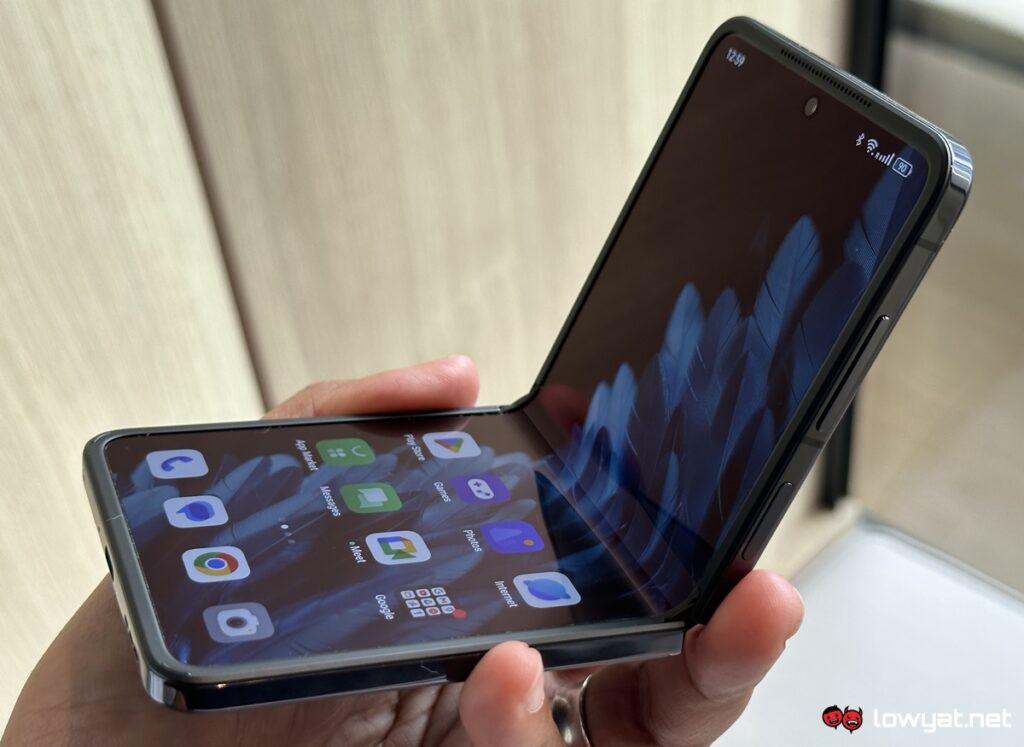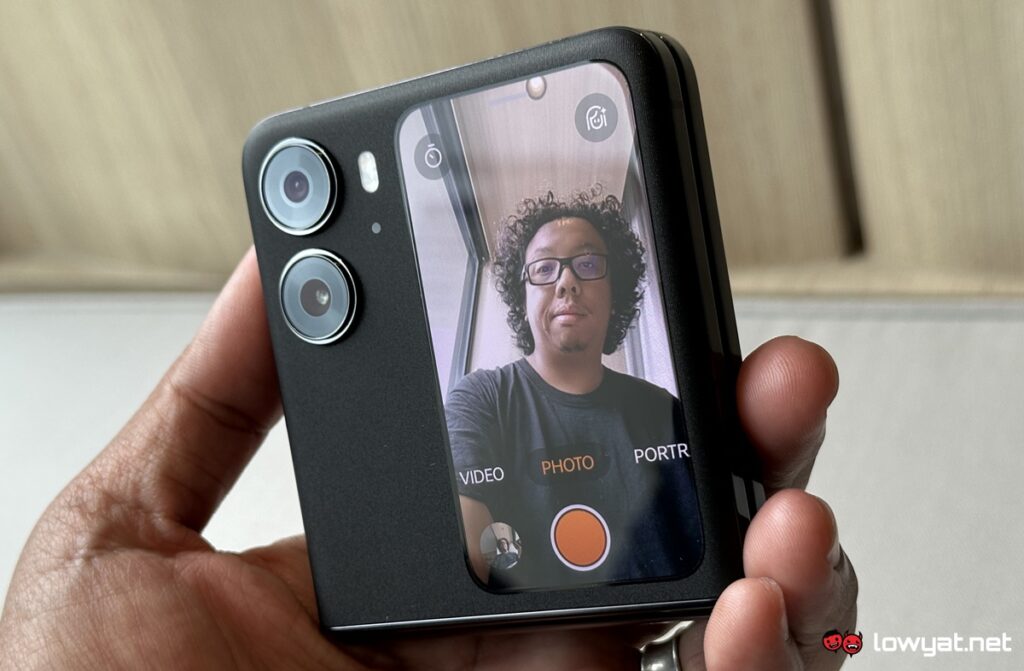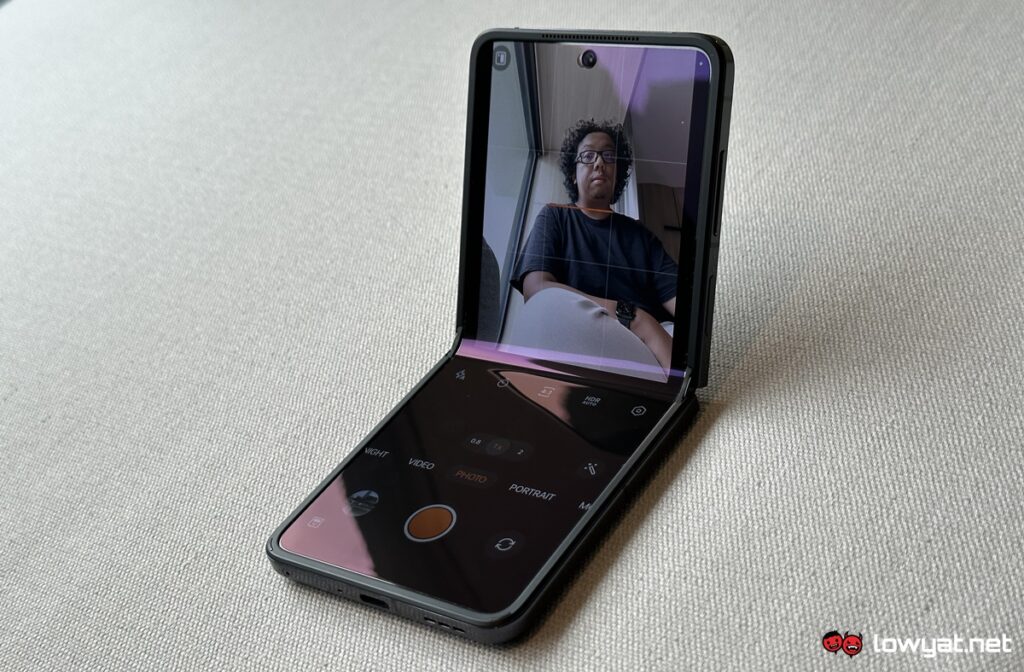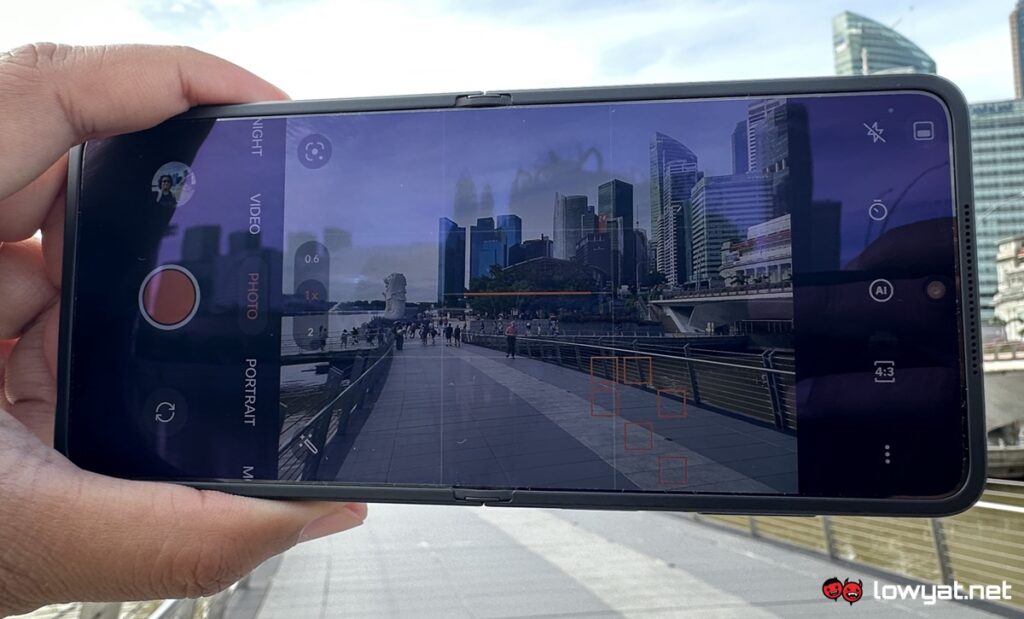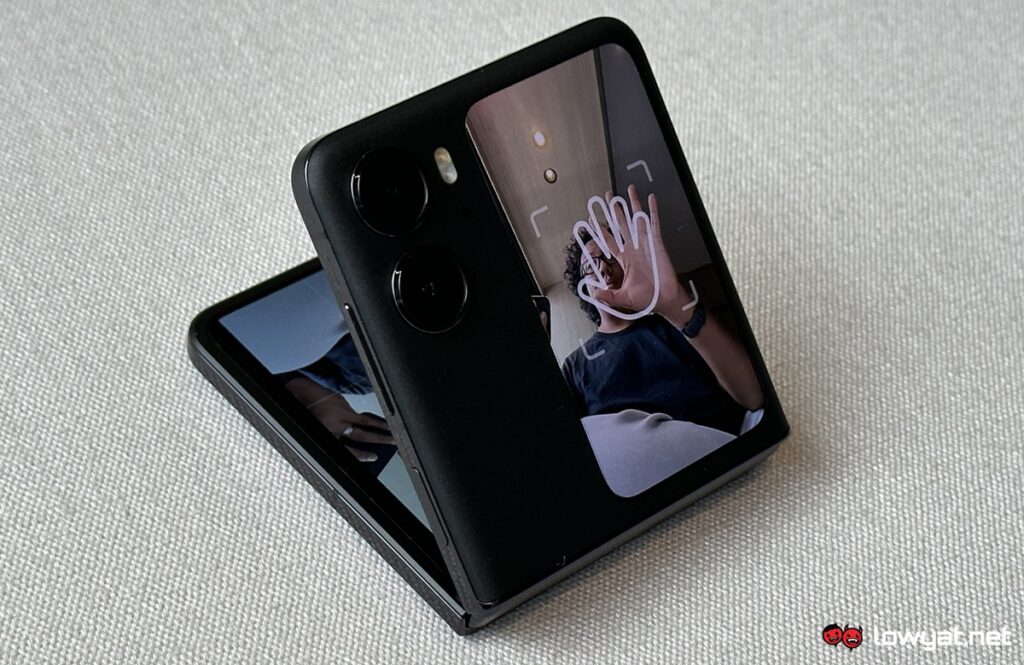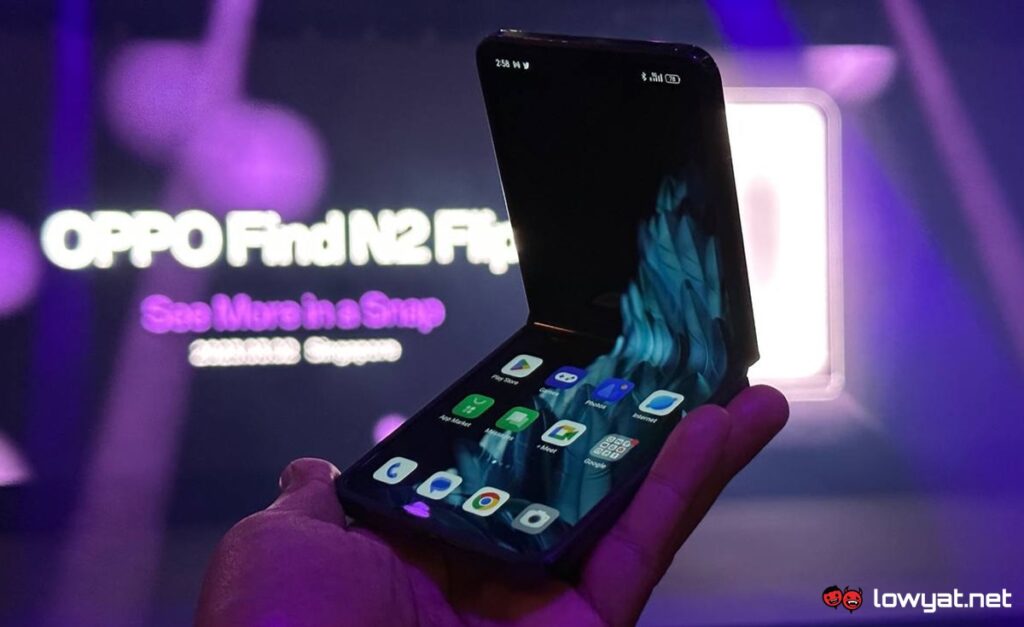This is not the OPPO’s first rodeo in the foldable arena but when it comes to a global foldable product, the Find N2 Flip is indeed the company’s first outing. This particular model was first revealed back in December alongside another foldable model, the Find N2 which currently remained exclusive to China.
Whether these companies like it or not, the OPPO Find N2 Flip would always be subjected to comparison with the Samsung Galaxy Z Flip4. After all, both devices not only have the same clamshell form factor but also has the word “Flip” in their names.
First, let’s get the hardware specs into the picture before we proceed further. You are looking at a compact foldable powered by MediaTek Dimensity 9000+ chipset which was built on TSMC 4nm process technology and is among the most powerful processor that MediaTek has to offer at the moment.
The Find N2 Flip also carries 8GB LPDDR5 RAM and UFS3.1-based 256GB internal storage. However, it does not offer support for MicroSD card though which may not bode well for those who felt that the 256GB is too small for their needs.
When it comes to the display, the Find N2 Flip has two of them with one being the main 6.8-inch Full HD+ flexible AMOLED display with LTPO technology that allows it to have a dynamic refresh rate capability of up to 120Hz. On the other hand, there is also the 3.26-inch secondary display which is located on its front cover and has a 720 x 382 resolution as well as a 60Hz maximum refresh rate.
The phone’s main photography setup which was co-developed with Hasselblad consisted of a 50MP f/1.8 primary camera with a Sony IMX890 sensor and an 8MP f/2.2 ultra-wide fixed focus camera. For selfies, it is handled by the 32MP f/2.4 camera which features a Sony IMX709 sensor and has an autofocus capability.
Wrapping the general specs sheet is two batteries that deliver 4300mAh of power to the phone. Having a SuperVOOC flash charge support is something that you would expect from a premium tier OPPO device and the Find N2 Flip certainly supports it at a maximum power rating of 44W.
As far as I can tell from my initial two and half day experience with it, OPPO’s take on the foldable clamshell device did surpass its Samsung counterpart in several ways. The first and most obvious is the fact that you can’t really spot the crease on the screen unless you try to search for it by looking at the phone from a certain angle.
Additionally, you can still feel the hinge mechanism when you interact around the middle part of the screen. Still, the fact that the crease is hardly visible sometimes made me forget that I’m using a foldable phone and when Find N2 Flip is folded, there is no gap between both sections of the phone as well which is definitely pleasing to look at.
The other factor that may make one consider the Find N2 Flip over the Galaxy Z Flip4 is certainly the larger 3.26-inch vertical cover screen which provides more space for one to read texts or notifications and better visibility when using it as a camera viewfinder. As a comparison, the Galaxy Z Flip4 has a much smaller 1.9-inch horizontal cover screen.
Another advantage that the Find N2 Flip has over Galaxy Z Flip4 (at least on paper) is the fact that OPPO’s release has a bigger battery at 4,300mAh as opposed to Samsung’s 3,700mAh. The phone’s 44W SuperVOOC flash charge power rating is much higher too which allows it to reach 50% battery level in 23 minutes while its Samsung counterpart maxed out at 25W and takes 30 minutes to reach the same battery percentage.
OPPO also noted that the Find N2 Flip can still hold its ground even after 400,000 folds, as certified by TUV Rheinland. On the other hand, the Galaxy Z Flip4 was tested at a much lower rate – 200,000 folds – by Bureau Veritas according to Samsung.
Since both of them are foldable clamshell devices, they do have this one particular feature that is similar to each other which is the ability to be unfolded between certain angles. While OPPO and Samsung called them differently – FlexForm and FlexCam respectively, the implementation on the Find N2 Flip is certainly no different from the Galaxy Z Flip4.
FlexForm essentially allows the Find N2 Flip to provide a hands-free experience for a number of scenarios such as selfies, group photos, video calls, and video playback. Similarly, certain apps including WhatsApp, Zoom and YouTube would automatically switch into foldable UI when you utilize the phone in the FlexForm position.
While I will discuss the Find N2 Flip’s photography experience in the full review later, here are some samples from the foldable that I snapped during my brief walk in Singapore for the past two days ahead of its regional launch event:
Check out all the samples over at this Flickr album.
As for everything in this world, the Find N2 Flip has its own shortcomings as well. For some, they might be turned off to know that the device only has one storage option while its colour varieties are limited to just two – unlike Galaxy Z Flip4 which has four options and that is not even considering the customisable Bespoke Edition.
The Find N2 Flip also has no IP rating and OPPO also did not mention whether the company has implemented any fortified glass on the device, unlike Samsung which uses Corning Gorilla Glass Victus+ on the cover screen of the IPX8-rated Galaxy Z Flip4. So, there is no additional protection when it comes to durability against the elements.
There is also a couple of other things too like the absence of optical image stabilization and 8K video recording capability for its camera system. The Find N2 Flip also has no wireless charging capability which is a feature that many would expect to have from a premium-tier device.
Of course, I still need to explore the phone further and look into many other factors such as performance, camera capabilities, and user experience before I can put out a verdict on the new foldable model. It will come in due time, so stay tuned for the full review coming your way very soon.
Follow us on Instagram, Facebook, Twitter or Telegram for more updates and breaking news.


